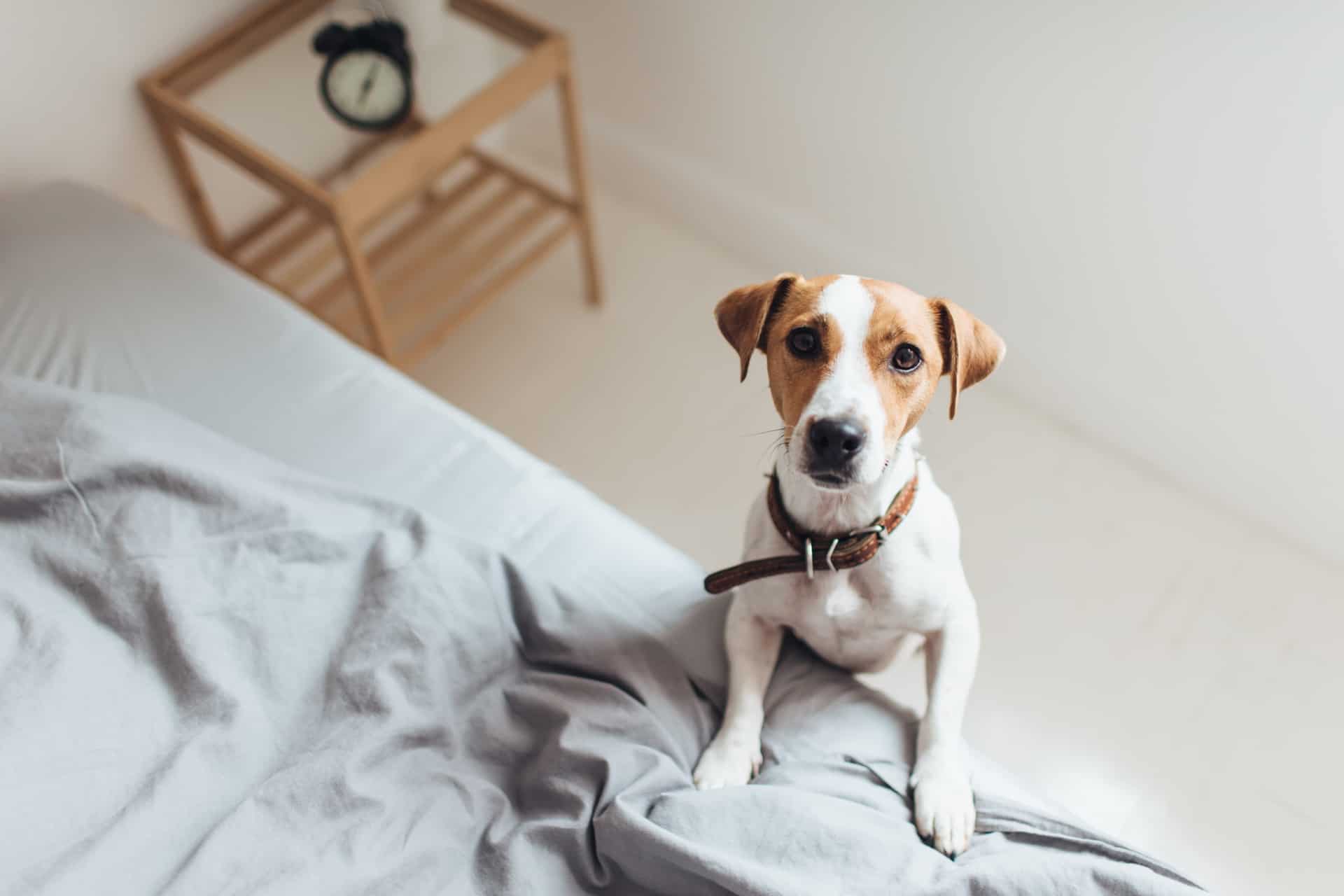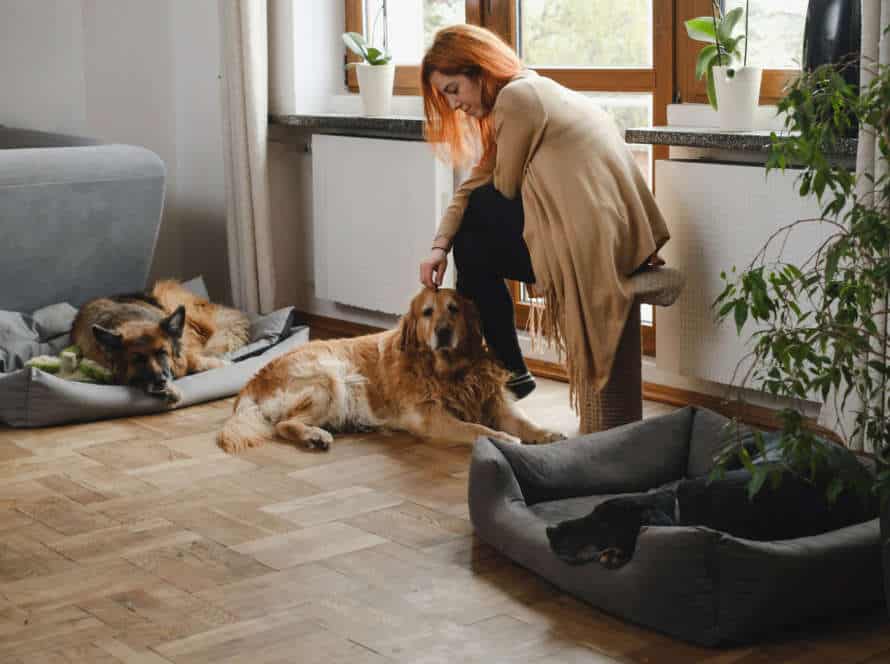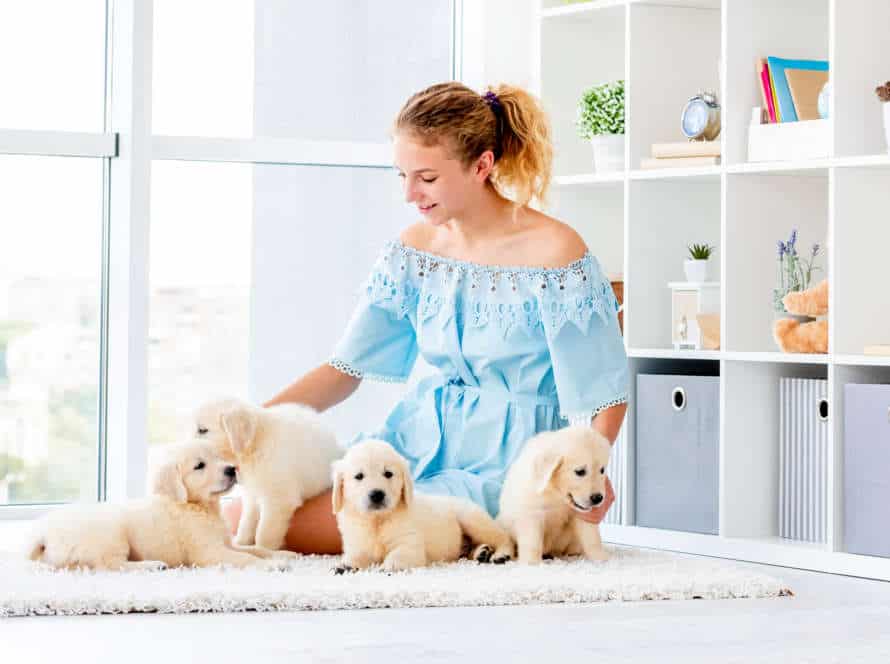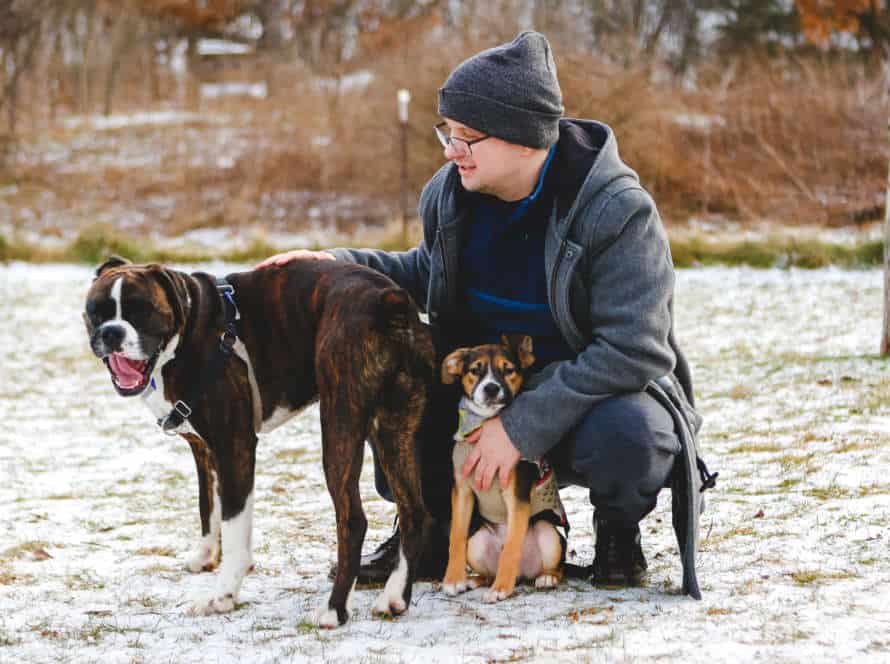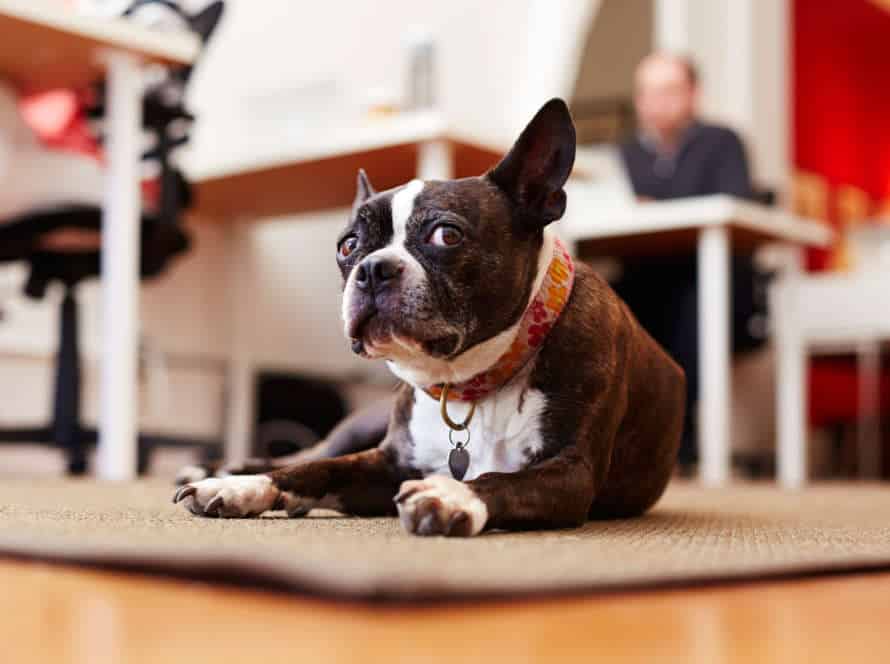Teaching Your Dog to Embrace Change: Tips and Tricks
Teaching your pup to accept change can be tough, yet important for its health and wellbeing. Here are some tricks to make it simpler for your fluff-ball!
- Slow Introduction: Give them new objects or activities in small stages, so they can become more at ease with it.
- Reward: Praise them, give treats and rub their tummy when they behave well around new things. This rewards positive behavior and encourages them to like them.
- Stay Calm: Canines sense the atmosphere. So, stay relaxed and collected when introducing them to something new.
- Patience: Canines have their own pace. Don’t rush them and don’t push when they look troubled.
- Consistency: Consistency is essential to form new habits. Expose your pet to new experiences often to build confidence and help them accept changes easier.
Tip: Transition periods can be daunting for your pup. Consult a vet or a dog trainer to guarantee a secure and comfortable transition.
Understanding the Importance of Embracing Change
Teaching your pup to accept change is key for them to stay healthy and content. Change is often a worry for dogs and can cause undesirable habits. But, with proper training and guidance, your dog can learn to be more open to alterations and transition more easily.
Let’s explore why embracing change is so vital and how to help your dog do it.
The Role of Adaptability in a Dog’s Life
Adaptability is key for a pup’s life. Dogs that are able to adjust to different scenarios are better prepared to tackle changes, stress, and uncertainty. The importance of embracing change can’t be emphasized enough when it comes to a pup’s life.
Here’re some hints and tips to teach your pup to accept change:
- Step by step introduce new scenes: Gradually give your pup exposure to novel objects, people, and circumstances to make them feel more at ease with change.
- Promote positive associations: Join new things with positive memories by utilizing treats or toys to reward your pup’s good behavior during changes.
- Create trust: Strengthen the connection between you two by establishing trust via continuous and positive training.
- Be tolerant: Change can be unnerving for puppies, so be patient and give them time to get used to new situations.
By following these tips and tricks, you can help your pup become more adaptable and strong, which leads to a healthier and happier life.
The Benefits of Teaching Your Dog to Embrace Change
Teaching your pup to accept change can bring great advantages to both you and your canine mate. Dogs who are flexible and feel relaxed with change usually have better physical and mental health, better obedience, and a tighter bond with their owners.
Here are a few tips to help your dog accept change:
- Expose them to various places, people and animals from when they’re young.
- Have a regular practice routine, including obedience and socialization.
- Use positive reinforcement methods, like treats and praises, to motivate good behavior during times of change.
- Slowly introduce your dog to fresh experiences and situations to assist them in gaining confidence and adaptability.
- Always take safety into account and keep an eye on your dog’s behavior when there’s a change.
With patience and practice, your pup can learn to accept change and become a happier, healthier doggie.
Identifying Common Scenarios Where Dogs Struggle to Cope with Change
Dogs may find it hard to accept change in certain situations. It’s vital to identify these situations in order to help your dog cope. Common scenarios include:
- Moving to a new house/apartment
- A sudden change in daily routine
- Noises like fireworks or thunder
- A new family member/pet
Recognizing these scenarios and introducing change gradually is essential for aiding your dog’s transition. Tip: Rewards and positive reinforcement can be useful when helping dogs adjust to change.
Strategies for Teaching Your Dog to Embrace Change
Teaching your pup to accept change is vital. It keeps them content in any situation. To help with that, use these strategies! Here are tips and tricks to teach them how to embrace change. When bringing a new pet into the home, or making adjustments to your home life, these strategies will be useful. Get ready to learn how to help your pup understand change!
Building Trust and Confidence
To teach your pup to accept change, you need to build trust and confidence. Here are some strategies to help:
- Positive reinforcement: Reward your pup’s good behavior and progress with treats and praise.
- Consistency: Make a routine and stick to it. This gives a sense of stability. Also, be consistent with commands and behavior so your pup trusts you.
- Drip feeding: Introduce unfamiliar situations, people, and experiences bit by bit in a controlled and good atmosphere.
- Patience: Your pup might take time to adjust. Don’t push it, as this could make it scared and worried.
Pro tip: To help your dog accept change, build trust and confidence. Use positive reinforcement, consistency, gradual exposure, and patience. This will create a secure and trusting environment for your pup.
Positive Reinforcement Training Methods
Positive reinforcement training is a great way to help your pup accept change. It motivates good behaviour and builds your dog’s confidence. Here are 3 methods to use:
- Clicker Training: Use clicks to mark when your pup does something right. This will help them be enthusiastic when they’re faced with something new.
- Treats and Rewards: Offer treats or toys when your pup behaves well. This will create positive associations with new experiences.
- Verbal Praise: Say encouraging words with a happy tone. This will help your pup feel confident when they face something unknown.
Remember – being consistent is key. With patience, practice and positive reinforcement, you can help your pup accept change with ease.
Mutual Attraction and Bonding Exercises
Gaining mutual attraction and forming a bond are both great strategies to help your pup become comfortable with change. Here’s two simple exercises that can help:
- Eye contact – Sit in front of your pup and make eye contact. Then, reward them with a treat. Repeat this a few times, increasing the duration each time.
- Walking – Take your pup for a walk in a peaceful area. When they follow your commands or behave well, reward them with petting, praising, or treats. This will help your pup connect change with positive experiences.
These exercises enable trust, socialization and confidence in dogs, making them more adaptive to change.
Managing Your Dog’s Environment and Experiences
Managing your pup’s surroundings and experiences is essential when training them to accept changes. Here are some ideas:
- Positive Reinforcement: Give treats, toys, and compliments to reward good behaviors and help your dog link change with fun and satisfying experiences.
- Gradual Introductions: Gradually expose your dog to new environments or activities, allowing them to become accustomed at their own speed. Over time, gradually increase their exposure.
- Desensitization: Let your pup experience the sounds or items they might come across, such as car rides, vacuum cleaners, or hair dryers, in a controlled and tranquil setting.
- Supervision: Keep an eye on your pup when they are dealing with something new and offer plenty of time for rest and breaks.
Remember, teaching your dog to be okay with change requires patience, consistency, and lots of positive reinforcement. With time and effort, your furry pal can learn to be more flexible and adaptive.
Gradual Exposure to Change
Gradual exposure to change is the key for teaching your dog how to accept it. Whether it’s a new place or a changed routine, it helps them feel secure.
Here are some tips:
- Start with minor changes like a new toy or snack.
- Then, increase the intensity, like a sound or smell.
- Feeding and walking routines can also be altered.
- Give treats or praise to motivate them.
- Be patient and consistent.
- Let them take their time to explore the new environment.
Introducing Change Slowly and Incrementally
Introducing change to your pup’s life gradually, in small doses, is an effective way to help them adjust to new situations and experiences. Here are some tips and tricks for this:
- Start with minor changes to your dog’s daily routine, like a new walk path or different feeding time.
- Steadily increase the complexity and frequency of these changes as your pup gets comfortable.
- Use positive reinforcement, like treats and praise, to help your pup link new experiences with good outcomes.
- Patience is key! Give your pup enough time to adjust to each new change. Rushing can lead to anxiety and stress.
- By applying these strategies, you can help your pup be more adaptable and brave in the face of change.
Helping Your Dog Understand and Process Change
Training your pup to manage change can be tricky, but it’s essential for their mental and physical health. Here are some tactics to help your fluffy friend comprehend and handle change:
- Begin early: Expose your dog to varied experiences and atmospheres from the start, so they learn to adjust and be at ease in new settings.
- Consistency is a must: Constructing a predictable plan can reduce your pup’s anxiety and make them feel safer when met with changes.
- Positive reinforcement: Reward your pup with compliments, snacks, and toys when they act favorably to changes, like greeting different people or going to novel places.
- Go slow: Introduce changes carefully, in small steps, to aid your pup gain assurance and reduce their stress levels.
- Seek professional help: If your pup has difficulty with anxiety or behavior issues caused by change, consider engaging a professional dog trainer or animal behaviorist.
With patience and effort, you can help your pup master the abilities to deal with change and live a happy, healthy life.
Creating Positive Associations with Change
Teaching your pup to accept change is possible! Here’s how:
- Introduce new things gradually. Use treats and praise as positive reinforcement.
- Let your dog explore at their own pace, without forcing or overwhelming them.
- Be reassuring when introducing new things, and don’t react negatively to fear or anxiety.
- Provide plenty of exercise and playtime to burn off energy.
In conclusion, create positive emotions and experiences with change to teach your pup to embrace new things with confidence. Pro tip: Strengthen your bond by going on walks, playing games, and cuddling. This builds trust and helps your pup accept changes.
Overcoming Specific Challenges
Teaching your pup to accept change can be tough. But these strategies can make the process easier:
- Begin Small: Introduce changes step by step, like a new toy or edible.
- Give Praise: Reward good behavior when your pup is faced with change. Verbal compliments or treats will do the trick.
- Be Patient: Change can be tough for canines. It may take a while for them to adjust.
- Be Consistent: Utilize the same commands and rewards each time a change is introduced. This way, pooch knows what to expect.
- Don’t Force It: If your dog seems scared, don’t force them to face it. Let them adjust in their own time.
These tips will help your dog embrace change and live a happier, more flexible life.
Managing Separation Anxiety
Managing separation anxiety in dogs can be tough. It takes its toll on both the pet and the owner. Teaching your pup to accept change, though, can make a big difference. Here are some tips:
- Start small with time apart and increase it slowly.
- Give your pup a comfy sleeping spot.
- Use positive reinforcement for good behavior.
- Do calming activities before you leave.
- Don’t be dramatic when you or they come/go.
By following these strategies, and being patient and consistent, you can help your pup overcome their separation anxiety and have a happier life. Extra tip: Keep a routine to help reduce anxiety.
Coping with Fear or Trauma
Fear or trauma can be a real challenge for pet owners. Teaching dogs to embrace change is difficult. Here are some tips to help your pup learn:
- Positive reinforcement: Offer treats, praise, and petting for good behavior.
- Gradual exposure: Introduce new situations gradually.
- Consistency: Be consistent with positive reinforcement.
- Patience: It may take time for your pup to adjust.
- Professional help: Consider seeking help from a pro.
Addressing Behavioral Issues Related to Change
Addressing behavioral issues related to change in your dog is must for both their wellbeing and your peace of mind. Here are some tips to help you teach your pup to embrace change:
- Build a routine. A dog’s routine is key to reducing stress and anxiety caused by change.
- Socialize them. Introduce your pooch to new people, animals, and places.
- Positive reinforcement. Using treats, toys, and praise can be a great motivator.
- Gradual exposure. Expose your pup to new changes in a safe and positive environment.
- Stay calm & patient. Dogs can sense stress & anxiety, so stay calm during the training process.
By following these strategies, you can help your pup embrace change and enjoy new experiences.
Practical Tips and Tools for Teaching Your Dog to Embrace Change
Change can be scary, for both people and pups! Therefore, it’s important to help your pup feel comfy with unfamiliar people and situations. Luckily, there are lots of tricks and tips to teach your dog to accept change. In this article, we’ll share the best methods for doing so!
Creating a Safe and Comfortable Space for Your Dog
Creating a secure and comfy area for your pup is critical for its overall wellbeing and joy. Educating your doggy to accept changes can be tough, but it’s vital for forming an adaptive and robust furry pal.
Here are a few useful tips and tools for teaching your pup to embrace change:
- Begin with minor changes in the house, such as relocating furniture or introducing new toys.
- Apply positive reinforcement techniques, such as treats and praise, to motivate your pup’s good behaviour during changes.
- Produce a safe area for your doggy, such as a crate or specific zone, where they can escape and feel safe during a shift.
- Consistency is essential in instructing your pup to accept change, so try to preserve a regular and adhere to positive reinforcement techniques.
By following these useful tips and tools, you can assist your pup to feel secure and comfy in novel situations while also constructing a strong bond between you and your furry friend.
Utilizing Toys and Treats to Increase Positivity
Make change easier on your pup by using toys & treats! Here’s how:
- Feed ’em their favourite snacks – only when introducing something new.
- Keep ’em entertained with interactive toys.
- Start small – if you’re introducing a new person, start with short visits.
Using toys & treats can help your dog feel happy and safe when facing change.
Seeking Professional Help and Support
Seeking help and support when teaching your pup to accept change is essential, especially if they have severe anxiety or conduct issues.
Here are some practical tips and tools:
- Identify the changes that make your pup anxious and gradually expose them in a positive way.
- Reward their calmness with treats, toys, and praise during the change.
- Provide a secure, comforting setting for your pup during the change – like a crate, a relaxing scent, or gentle music.
- Consult a licensed canine behaviorist or trainer if your pup’s anxiety or behavior does not improve or gets worse.
- Be patient, consistent, and loving to your pup throughout the process.
Frequently Asked Questions
Q: Why is it important to teach your dog to embrace change?
A: Teaching your dog to embrace change can help them adapt to new situations and environments, making them less anxious and stressed in the long run.
Q: How can I help my dog adjust to changes in their routine?
A: You can help your dog adjust to changes in their routine by gradually introducing new elements and giving them rewards and positive reinforcement for good behavior.
Q: What are some common changes that dogs struggle with?
A: Common changes that dogs struggle with include moving to a new home, introducing a new pet or family member, and changes in their owner’s work schedule.
Q: Can all dogs learn to embrace change?
A: Yes, all dogs have the potential to learn to embrace change, but some may require more patience and training than others.
Q: How long does it take to teach a dog to embrace change?
A: The time it takes to teach a dog to embrace change can vary depending on the dog’s personality and the type of change being introduced, but consistency and patience are key.
Q: What should I do if my dog continues to struggle with change despite my efforts?
A: If your dog continues to struggle with change, it may be beneficial to seek professional help from a certified dog behaviorist or trainer.

